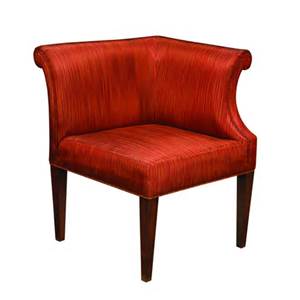
| Volume 30 #6 | May/June 2014 | |

Watch out, this Chair is on roller skates!
At least, that's the way it feels this time round, with so many things going on -- so this message will be even shorter than most.
Firstly, I have to mention the Dinner Dance, still fresh on everyone's mind. It was well done, in all respects, and I enjoyed it immensely. I do have more to amplify on some specific items, but that will have to wait for another missive.
Lastly, I heartily encourage everyone who can to attend our AGM, set for May 31st at 1pm at the Clark PUD Community Room. I don't think it will be very long, but it is important, and another very nice opportunity to get together, not just with fellow dancers, but with fellow members, to review this past year, and to support each other and our Branch. I hope to see you all there.
That's it for now, and . . . . Happy Dancing!
(Please note agenda and membership links and information in the calendar section ~ The Editor)
I'm currently in the middle of one of my three-or-four-times-a-year visits back home to Atlanta. These are always fun, but this time I got a bonus. Just before I left Portland I received an e-mail from the Atlanta branch, reminding everyone that the Loch Norman Highland Games would be happening up in Charlotte the second weekend after my arrival.
Since I wasn't aware of this in the first place, I was glad to have the 'reminder', and I wrote to my friend Sylvia Chandler to see if she was going. Some of you may remember her, as she's been out to visit and attend the Portland Ball a couple of times. It just so happened that she had reserved a room and didn't yet have a roommate, so I was all set! I had only been to this event once in the past as back in my early days of dancing, I tended to ignore the out-of-town dances that didn't have an associated workshop, since that was my main focus at the time and I was a little nervous about going to balls anyway. When I moved to Portland, I was surprised to find that there was no dance at all in conjunction with the games, since all the games I had previously known about had had dances on the program.
The Loch Norman Games DID have dances both nights, so Sylvia and I made the four hour drive to Charlotte on Friday afternoon, arriving just in time for a little rest and a little dinner before heading over to the welcome dance. The musicians were a great duo - two young brothers from Scotland, Luke and Adam Brady. They have a bigger band back home, but it would've been too expensive to bring them all over. I didn't make it out to the games the next day because I opted instead to drive up to Winston-Salem, a little over an hour away, to hear my former chorus, Song of Atlanta, sing in their regional competition. That worked out perfectly for me, and I got back just in time to get ready for the ball. Both of the dances were pretty well attended. I didn't actually count any noses, but it seemed that there were about six to eight sets dancing most of the time.
Eilean Yates has been running this show for many years now, and she does a fine job of it. The intermission buffet both nights is so extensive that there's really no need to have any dinner beforehand. There were sixteen dances each night, and due to the recent misbehavior of my hip, I only felt like doing nine the first night and ten the second. But I thoroughly enjoyed what I did. It was an excellent program. Fortunately, I've recovered enough to consider going to the Saturday social here in Atlanta this weekend. They have their monthly social dances here on Saturday or Sunday afternoons, which I think is a fine idea.
So if you ever find yourself in the vicinity of Charlotte, NC, in mid-April, with nothing to do, check out the Loch Norman Highland Games weekend. I highly recommend the experience! And if all the dancing on Friday and Saturday nights isn't enough, you can also dance at the games both Saturday and Sunday afternoons.

We just never stop finding ways to have fun around here. And some of the best fun is making new friends while we share our love of dancing with each other. Several of us had a chance to do just that at a Dance-O-Rama on March 30th at Fairway Village in east Vancouver. The event was orchestrated by Elsie Bartling and Connie Sanders, who live in the Fairway Village community and run a square dance club there on Monday afternoons. They wanted to get their neighbors interested in making new friends and getting some exercise, so they put on a showcase of dancing.
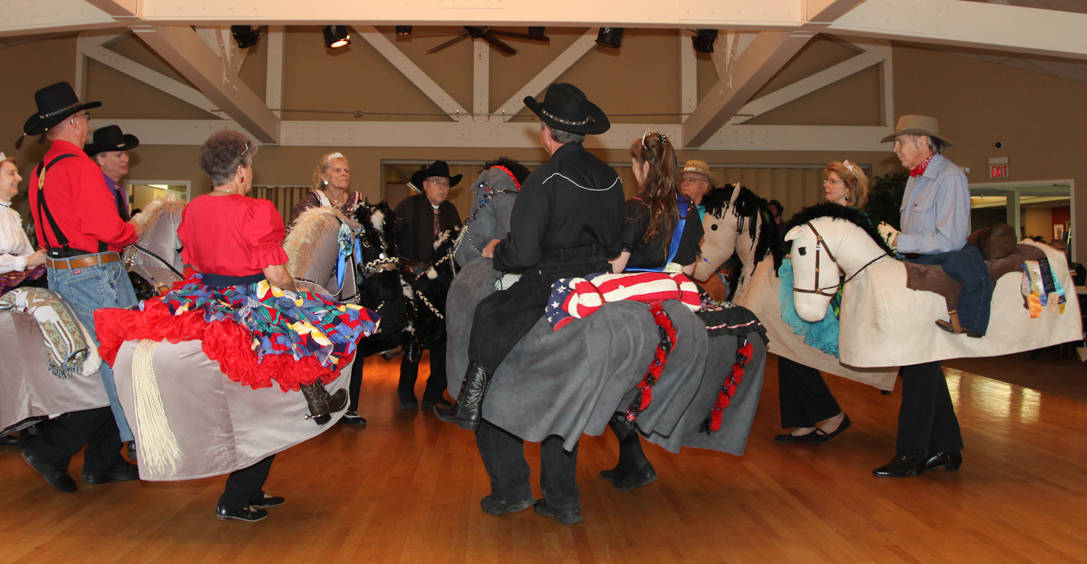
Marge van Nus, Susan and John Shaw, Martin MacKenzie, and Tom and Liza Halpenny were joined by Norma Rice and Carol and Danny Williamson to demonstrate Scottish Country Dance. Here are tastes of two of the dances we did: Black Donald, https://www.youtube.com/watch?v=0pihMJerLdM and Neidpath Castle, https://www.youtube.com/watch?v=DMLuAJ4-13I
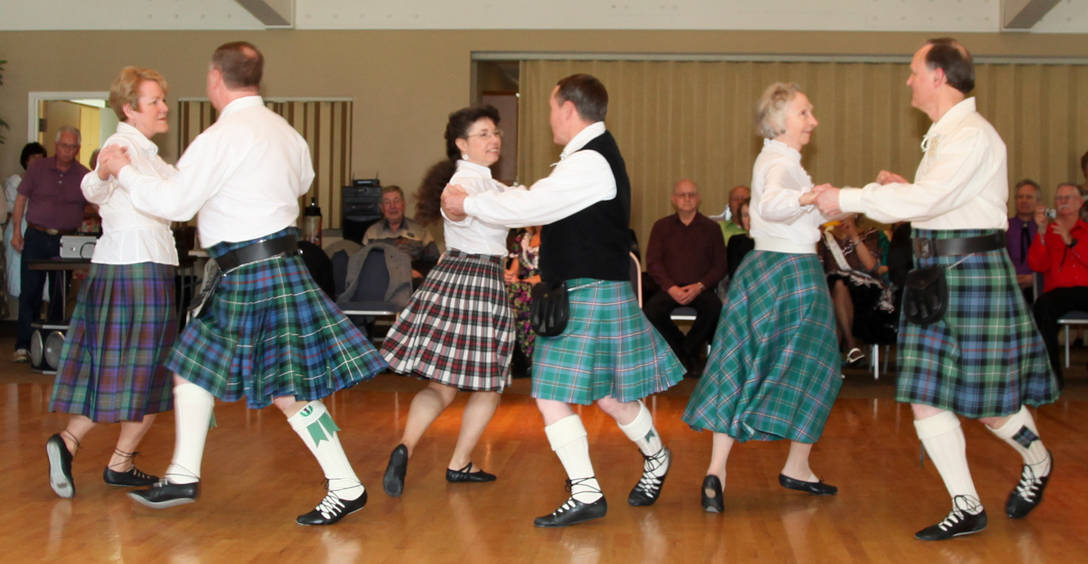
The event also included bluegrass music and yodeling, clogging, the River City Riders (square dance on horseback) and regular people-only square dancing. After the demonstrations, we were all treated to a square dance lesson. The Scottish Country Dancers surprised people with how quickly they caught onto square dancing. Well, no surprise to us, of course.
Hopefully we will have more opportunities in the future to mingle with friends who do other types of folk dancing. Cross-culture explorations are always enriching.
(Note, the photos are by Ed Smith.)
Because new dancers look to experienced dancers as those knowing how to dance, remember to:
1. Give them confidence by showing you like to dance with them.
2. Be careful not to push, pull, or especially shout.
3. Make eye contact as this is social dancing. We all dance together.
4. Lead a new dancer with eye contact, hand gestures, tap your own correct shoulder to be
passed in reels of three, a nod of the head, any subtle motion.
5. Know for sure which hand to give or which way to move in a reel.
6. Do not get upset when mistakes are made, we all make mistakes at times.
7. Refrain from forcing an issue and show politeness by example. Let the teacher sort out mistakes.
8. Dance smoothly and to the best of your ability, show them how it is done.
9. Encourage and acknowledge their effort, accept and affirm their dancing.
10. Stay with the instruction/walk through and do not go ahead because you know the dance.
Beginners do not know the dance and are just now learning it. Set a good example for new dancers to follow.
Scottish dancers surfed waves of music at the April 26 Dinner Dance with theme "Blue Hawaii" at St Luke's Episcopal Church. Lisa Scott, Linda Danielson, and Leslie Hirsch fueled the flow of musical dancing energy.
Many dancers dressed in a manner suggestive of the relaxed life of Hawaii. Beach chairs and palm trees decorated the hall, and each table had a centerpiece depicting the beach and a surfer on a wave of blue jello.
Vancouver dancers were happy to greet guests from Seattle, Bend & Redmond, Eugene, and Portland. This was the first dance for some new dancers who have been practicing the program in the dance classes. An experienced dancer new to our group was pleased with how inclusive everyone is.
Dance co-chair Theresa Ryan welcomed dancers. Jennifer Pratt-Walter began the evening with ripples of harp music during dinner. Emcee John Shaw maneuvered through the evening dance program. Victoria MacKenzie piped dancers into the hall to begin the first dance. Linda Mae Dennis and Sally Bledsoe briefed the dances. Dancers were invited to continue the social fun at an after party at Linda Mae's and Patrick's home.
The program featured several interesting dances. In "Bratach Bana", 1st couple promenades one pair of corners back to their opposite positions, and then returns the other pair of opposite corners with half diagonal rights and lefts. "Gypsy Dreams" features the Gypsy Poussette with elegant covering. "Barbara's Strathspey" features the three couple Bourrel when separated partners magically reappear. "Da Rain Dancin'" features interrupted hello-goodbye setting. "Oslo Waltz" as the final dance brought back happy memories of the evening as all my partners passed me in the circle.
Thank you to co-chairs Katie and Bryan Jones and Theresa Ryan, and planning committee members Susan Shaw, Lanette Pinard, Linda Lindley, Linda Mae Dennis, Tom Halpenny, Liza Halpenny, Layne Russell, Patrick Hogan. And thank you all for coming to the dance!

|
|
|
|
|
|
|
As Cathy puts it, "This one keeps me swimmin' . . " ~ The Editor
'The best things in life are nearest:
breath in your nostrils,
light in your eyes,
flowers at your feet,
duties at your hand,
the path of right just before you.
Then do not grasp at the stars,
but do life's plain, common work as it comes,
certain that daily duties and daily bread
are the sweetest things in life.'
~Robert Louis Stevenson~
Seven Scottish Dancers twinkled their toes for a St. Patrick’s Day pot of gold at the Marquis Centennial nursing home in Gresham, OR on March 15th. Led by John Shaw, the group also comprised Susan Shaw, Maggie Faber, Sally Palmer, Martin MacKenzie, Tom Halpenny, and Liza Halpenny. A grand time was had by all.
This performance was one of several requests we had for the St. Patrick’s Day weekend. We could have done more demos if more dancers had signed up. As you can see by the Baskin Robbins photo, we usually find a way to enjoy each other’s company as long as we can after the fun of dancing together. Good times with good friends.
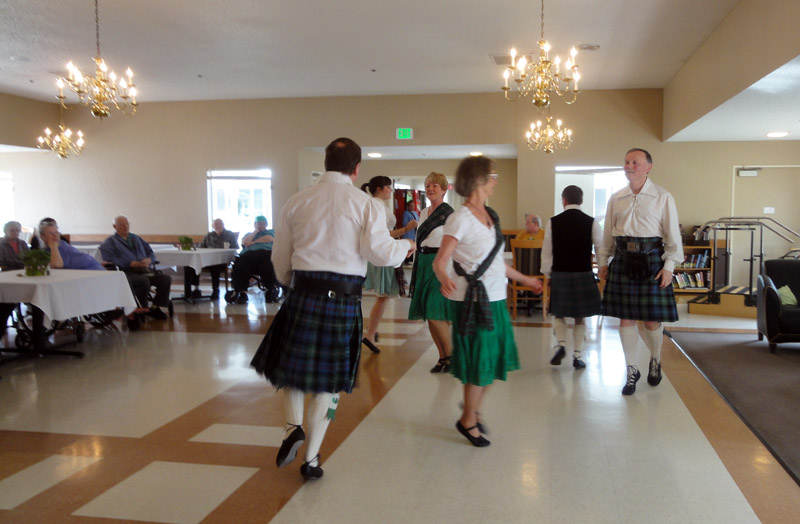
|
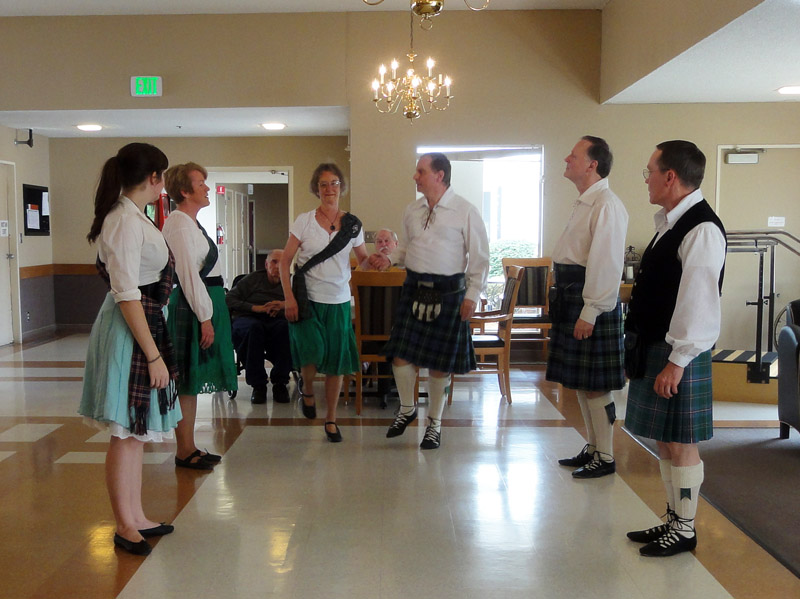
|
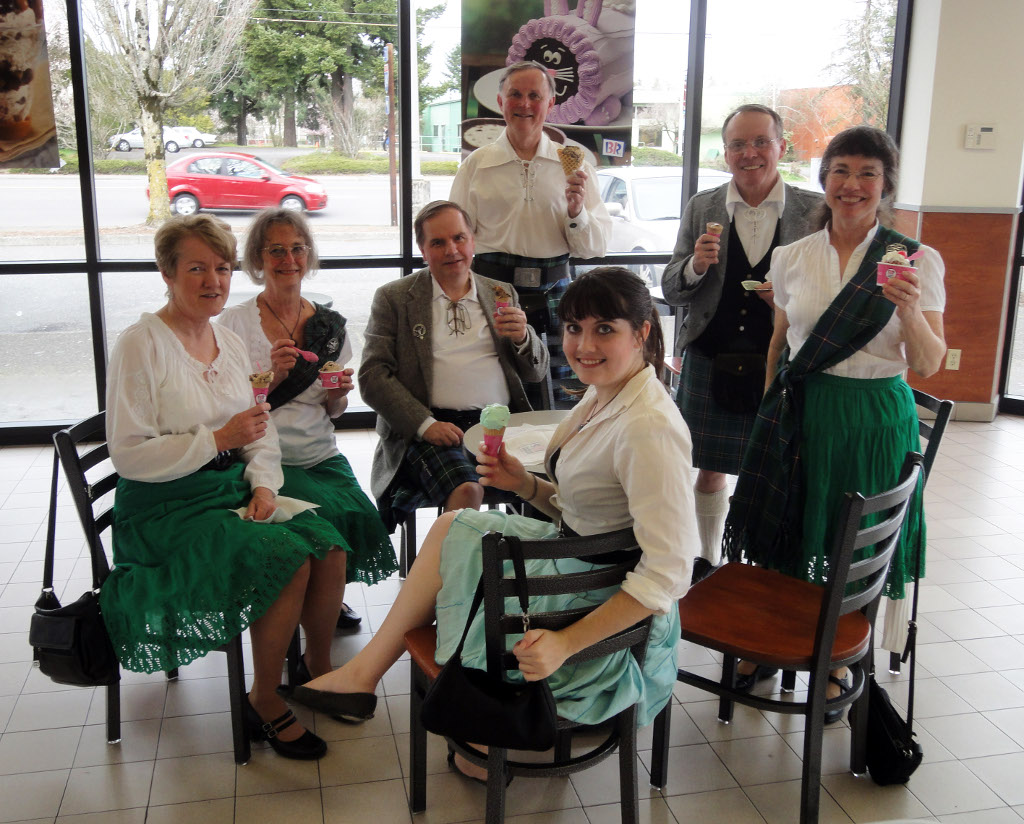
|
RSCDS has begun a 12-month Archive improvement and development project. RSCDS would like to invite branches and members to participate in the project by creating Scottish country dance Trails and recording Oral Histories for their local areas, for storage in the archive and for local use. We can access the web page to learn more: https://www.rscds.org/document/444
Plans are firming for the RSCDS global Commonwealth Ceilidh on Saturday, June 21, 2014, 7:30pm local time, in its partnership role with the "Get Scotland Dancing" campaign to get more people regularly participating in dance activity. RSCDS has created a 2.5-hour dancing program with videos that includes three new dances along with guidance on how to organize and run a mass Commonwealth Ceilidh. We can visit the website to learn more: http://www.commonwealthceilidh.org
I wrote a newsletter item 18 months ago, "The Importance of Eye Contact in Manual of Scottish Country Dancing". http://www.rscds-swws.org/news/201211/vol29-3.htm#EyeContact I was wondering where the "eye contact" social dancing skill came from, since it was not specifically mentioned in The Manual? I communicated with RSCDS and they thought the upcoming third edition could contain a sentence or paragraph about the subject.
I recently had an opportunity to read the third edition and I was curious to read what RSCDS has to say about eye contact. Before I give you the results, I would like to report what I learned about the Dance Technique topic. I have been attending Marge's Dance Technique class since September, so I wanted to get straight in my brain the methods of Dance Technique that we need to think about while we are traveling the formations (figures) of a dance.
We can read the Dance Appearance and Etiquette methods in sections 3.2 and 3.3 of The Manual. I grouped the methods into logical categories:
The following equations define combinations of the methods:
Teamwork = anticipation + management of a set + covering
Technique = steps + footwork + handing + phrasing + covering
Following are definitions of the methods, with the help of The Manual .
Dance etiquette: Dancers wait until a dance is announced before forming sets. Join others at the end of the lines. Be aware of set boundaries. After the dance, thank other dancers and clear the floor.
Management of a set: Maintain appropriate set width and length and position to suit the movements of the dance.
Anticipation: Dancer observes all that is happening in the set and anticipates what is about to happen, maintaining continuous flow.
Phrasing: Dancer begins each formation on the first beat of the musical phrase and completes the formation on the end of the final beat of the phrase.
Covering: Dancer has an awareness of their own position in relation to the position of other dancers.
Steps, footwork: The method is described in chapter 5 of The Manual.
Handing: The method is described in the Introduction to chapter 6 of The Manual.
Deportment: Dancer has an upright carriage for good balance, easy and natural poise, and no excessive body movement.
Bow and curtsey: Dancer begins and ends a dance by honoring partner, performed rhythmically during a chord. Three parts: gather self up, move down, and back up, while looking at partner.
Spirit of the dance: The expression of the true spirit comes from the stimulus of the music and each individual's response to the lively, elegant movements of the dance.
Now for the results of the RSCDS advice about eye contact: I observed that the subject continues to be omitted in the third edition. I thought about how eye contact fits with the methods, and I concluded that eye contact with our fellow dancers contributes to the spirit of the dance, as described in the following quote from The Manual.
"Mastering of the skills which have been described may lead to the correct performance of the dance without, however, expressing the true spirit of the Scottish country dance – 'performing' rather than 'dancing'. The expression of the true spirit cannot be taught. It comes from the stimulus of the music and each individual's response to the lively, elegant movements of the dance. During an adjudication at a Scottish Country Dance Festival, Dr Milligan exclaimed: 'It is a pity that there are so many performers and so few dancers.' The difference between 'performing' and 'dancing' has to be appreciated in order to bring out several important characteristics of Scottish country dancing."
Our good dancing friends, John, Cathy, and Caitlin Jones, are getting a new wood stove. It turns out that the stove has a Scottish heritage. The following is copied from the Esse website…
1816
On June 4th 1816 James Smith was born in Edinburgh. He was the second child and eldest son of James and Anna Smith. His father had been a shawl manufacturer in Paisley, but had moved to Edinburgh to set up a shawl merchants business there. By the time James was sixteen he had ten brothers and a sister, and was looking around for a career. The more he thought about it the more he was swayed by his friend Stephen Wellstood, who had emigrated to New York some years before.
So James set off to make his fortune in a romantic style, on foot. He had heard that a barque was soon to set sail from Greenock to New York. In New York he apprenticed himself to a metal worker, his friend Wellstood helping him by signing his indenture papers as his 'guardian'.
1841
After completing his apprenticeship, James worked with a manufacturer in the metal work business in New Orleans before setting up on his own in State Street, Jackson Mississippi. The business appeared to have prospered immediately because after just two years, James could afford to visit Scotland to marry the girl he chose nine years before, at the age of sixteen. Her name was Anne Wells Brown and they set off for a new life in Jackson. While the business prospered, Anne's health did not. The hot climate was wearing her down, and after a dozen years of it, it became evident that something had to be done. James made the biggest decision of his life. He had successfully been making and selling in America and it occurred to him that the type he specialised in was unknown in Britain. He would go home with his wife and five children and set up business there.
In the beginning
Thus it was in 1854 That James returned to Scotland and made arrangements to set up a business making ESSE stoves. He returned to the States to hand over his old business to his younger brother, Robert A Smith, and his adventures began all over again. On September 17th 'SS Arctic', the steamer that he was aboard, was involved in a collision with the 'Vesta'. James spent three days and two nights awaiting rescue aboard a makeshift raft before being rescued by the 'Cambria'. James returned to Scotland and the business of manufacturing ESSE cookers and stoves flourished.
The start of ESSE's unique heritage During the late 1800s James introduced his stoves and cookers to the wealthy Victorian market in Edinburgh. In 1854, on a return trip to America, James was dramatically shipwrecked in the Atlantic and survived by floating in a zinc-lined wicker basket until he was rescued three days later. Soon after, James formed a business partnership with his old friend Stephen Wellstood, and the company became known as Smith and Wellstood. Later, with the addition of a third partner, George Ure, the group opened an iron foundry at Bonnybridge called 'The Columbian Stove Works'. It was at this point the ESSE brand was created, with the French-sounding name reflecting the fashion at the time.
A unique client list
Florence Nightingale was passionate about ESSE cookers and would use no other brand at her hospital in Balaclava. Famous British explorers, Shackleton and Scott, also relied on ESSE to provide hot food and warmth to their expedition team in some of the world's coldest and most inhospitable places. This tradition is followed by top British climber Alan Hinkes, who uses a specially adapted ESSE Solo to heat his base camp in the Himalayas.
The Affordable Care Act (Obamacare) is raising awareness about health care and the high cost of health care and insurance. My personal health care plan is to stay healthy. Keep moving with lots of physical activity while dancing, have a reasonable diet, and have no need for drugs.
RSCDS has the slogan, "Dance Scottish...for fun....for fitness....for friendship"
I have observed the following priorities for why we like to dance:
1. Friendship. Social friendships are the highest priority.
2. Fun. Dancing is moving to the beat of the music.
3. Fitness. Health is an incidental benefit of dancing for Friendship and Fun.
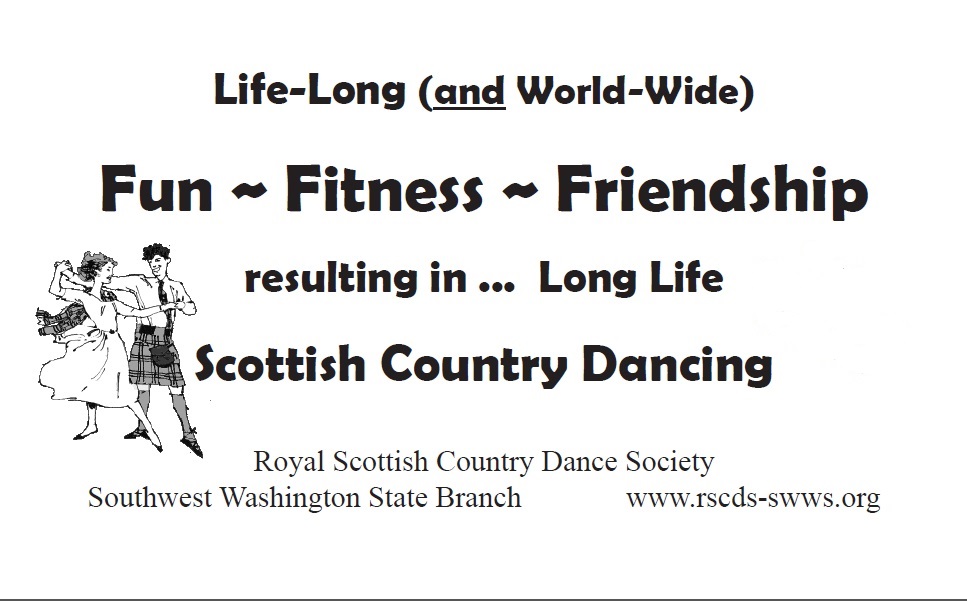
I seem to be more focused on the Fitness quality than other dancers. I am grateful that I have pretty good health. I imagine my good health is related to dancing activity. I average four days dancing per week and wear a pedometer to observe my physical activity. I try to reach a balance, to dance frequently enough to build strength and avoid injury.
We friends are having a lot of fun dancing together. It's good to know Scottish Dance is helping to maintain our health.
Calendar of Events | ||||||||
|
|